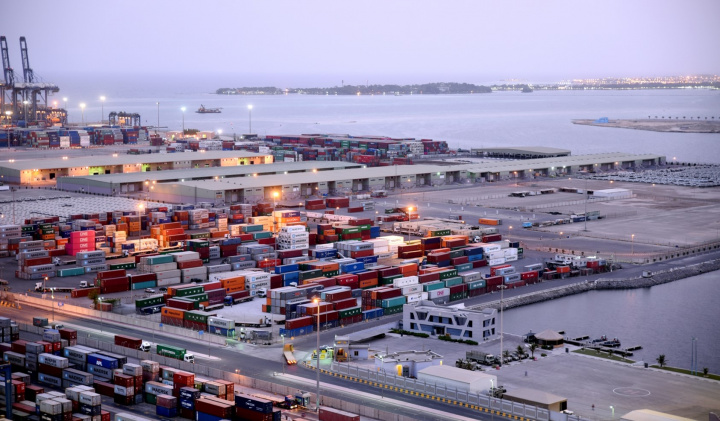The longevity of the Red Sea crisis holds the key to global freight rate levels and the fortunes of container shipping lines in 2024 and beyond.
Hua Joo Tan, Founder of container market intelligence analyst firm LINERLYTICA, told the latest episode of The Freight Buyers’ Club podcast, that the extra capacity sucked up by diversions of vessels around southern Africa to avoid conflict in the approaches to the Suez Canal was the main factor preventing excess vessel supply sinking freight rates and liner profits.
According to LINERLYTICA, more than 3m TEU of newbuilding container shipping capacity is due to be delivered this year amounting to net fleet growth of over 9% even after adjusting for scrapping. By comparison, the number of vessels now being diverted around the Cape amounts to 330 ships or 4.5m TEU capacity, a figure that will continue to rise through 2024.
“There is a shortage of ships in the market, at least for now,” he added. “So, the Red Sea situation has been an absolute game-changer for the industry. It has completely turned the supply and demand equation upside down.”
Mr Tan told The Freight Buyers’ Club, produced with the support of Dimerco Express Group, that if the Suez Canal reopened to container shipping it would prompt “a complete collapse in freight rates”. [See video here which is available for publication]
However, he added, this scenario is unlikely. “I do not expect to see a quick resolution to the Middle East crisis,” he said. “My base case is that this crisis in the Red Sea is going to drag out for many more months, and perhaps even turn into a multi-year issue, so this is a scenario that I think the market needs to prepare for as well.”
Bullish rates outlook
Mr Tan also claimed that some analysts and container line executives had been “overly negative” when forecasting freight rate levels for the rest of the year.
“To be clear, we haven’t seen rates collapse to pre-Red Sea levels, and in fact we have seen some recent strength in freight rates on a few trade lanes,” he said. “For example, we have seen rates rebound very strongly from Asia to South America in the past month.
“And I also expect to see that carriers will get some of the rate hikes that they’re pushing for in May.
“So I don’t see it as all doom and gloom for this year and we have the Red Sea crisis to thank for all this.”
Mr Tan also predicts that despite recent spot freight rate declines, container lines will still secure higher contract rates from shippers this year than in 2023 during ongoing trans-Pacific contract negotiations.
“It’s important to be clear that there isn’t a single benchmark rate in the market right now, because there is a very wide range of rates out in the market with very different price tiers depending on the volumes of business that you can bring in,” he said. “But generally, I would say that the contract rates for this year will be around 10 to 20 percent higher compared to where we were last year.”
Elsewhere in The Freight Buyers’ Club podcast, host Mike King and Mr Tan also discuss the pros and cons of the Gemini Cooperation between Maersk and Hapag-Lloyd, likely changes in the alliance system, and what impacts the temporary closure of the port of Baltimore and potential dockworker union actions at Gulf and east coast ports are having on US shipping strategies.
Source: Hellenic Shipping News






